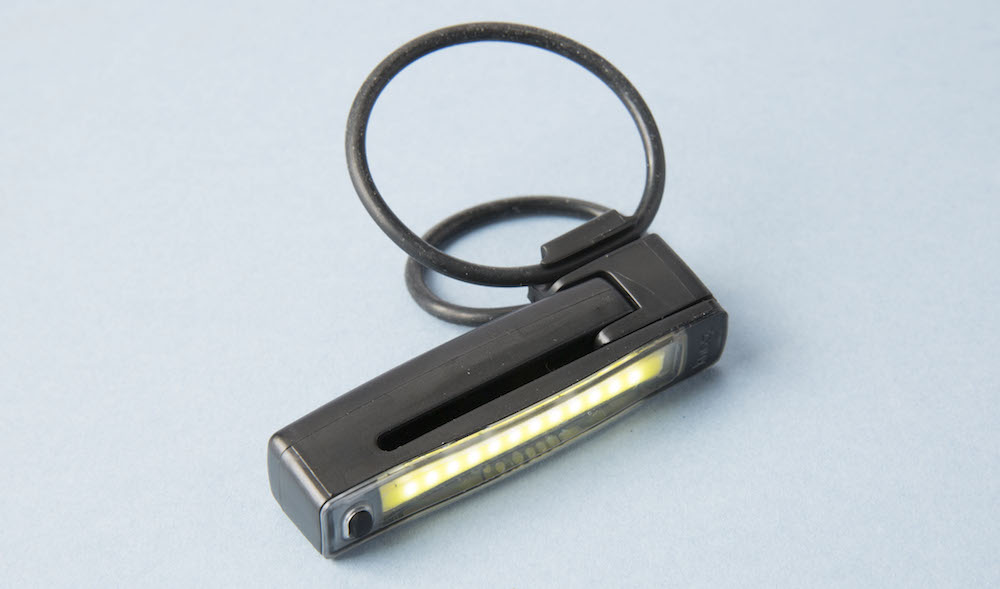Knog Plus lightset review
The Knog Plus lights can be attached to the bike or clothing for a versatile to-be-seen option

The Knog Plus lights attach easily and unobtrusively to the bike. But they can also be worn on clothing, making them very versatile. Light output is adequate to keep you visible and the run time is good for such a compact unit.
-
+
Compact and lightweight
-
+
Good run times
-
+
Versatile fixing options
-
+
Inbuilt USB plug
- +
-
-
Grooves and holes in the unit and mount accumulate dirt
You can trust Cycling Weekly.

Knog’s light designs usually come with a twist. In the case of the new Knog Plus wearable lights, that’s literally true.
The long, skinny profile of the Knog Plus lights is similar to quite a few other “be seen” type lights. It sits conveniently in line with the bars and the seatpost, so it’s unobtrusive. In the case of the Knog Plus lights, attachment is via a rubber strap which hooks over a clip at one end of the light unit. The light comes with two straps to suit different diameter fixing points.
So far, so conventional. But a twist of the light unit divides it in two, separating the light itself from its mount. The detached light has a USB plug built into the end of its USB array. And there’s a groove between the light and its battery, allowing you to use the Knog Plus as a wearable, clipped over a pocket or pack strap.
The two part design means that you can also leave the mount in place on a bike but remove the light for charging and security. The whole is held together by a strong magnet, so the light just clips back into the mount when you’re ready to roll again.

On to the lights themselves. There’s an arms race in lighting, with headline rear light outputs of well over 100 lumens for the most powerful units. The Knog Plus: just 40 lumens. But for a to-be-seen light, that’s plenty in most situations and the chip on board lighting tech used means that there’s a larger illuminated area than with a smaller number of brighter LEDs, so the Knog Plus is still quite noticeable. There’s pretty good side-on visibility too from the convex lens.
>>> Daytime running lights: should you be running them?
Run time is also good for such a small unit weighing just 18g with its mount and strap. In constant mode you get around 2 hours. But there are five modes in total, with run times extending up to 40 hours. Some of the flashing modes, like the strobe option make more efficient use of the battery than always-on and are much more eye catching too.
The latest race content, interviews, features, reviews and expert buying guides, direct to your inbox!
The only problem I had with the design, particularly when mounting the rear light on the seatpost, is that there’s a slot in the side of the unit and a hole in the top of the mount. In the usual rear wheel spray from damp roads, these soon accumulate muck, as does the groove between the light unit and the mount.
Wear the light and it’s less of an issue though, as there are fewer crannies and you can slip it over a rear pocket off centre to avoid spray. It feels pretty secure worn, with a robust clip and the bulk of the unit within the pocket. It’s IP67 rated for water resistance, so ingress into the light’s workings isn’t an issue.
>>> Best front and rear lights for 2018/19
Knog quotes a recharge time of 4 hours, but we managed 3 hours from flat. That’s quite long, but if you are selective with your lighting mode you’re unlikely to need to recharge every day. If you’re using a Macbook Air, it’s also worth noting that the magnet built into the light unit can cause the computer screen to turn off, unless you use a USB extension cable.
But overall, the Knog Plus lights provide a versatile, compact, lightweight option to get you noticed when you’re out riding by day or by night. A front and rear pack costs £31.99 and you can buy separate front and rear units for £17.99 each.
Paul started writing for Cycling Weekly in 2015, covering cycling tech, new bikes and product testing. Since then, he’s reviewed hundreds of bikes and thousands of other pieces of cycling equipment for the magazine and the Cycling Weekly website.
He’s been cycling for a lot longer than that though and his travels by bike have taken him all around Europe and to California. He’s been riding gravel since before gravel bikes existed too, riding a cyclocross bike through the Chilterns and along the South Downs.
